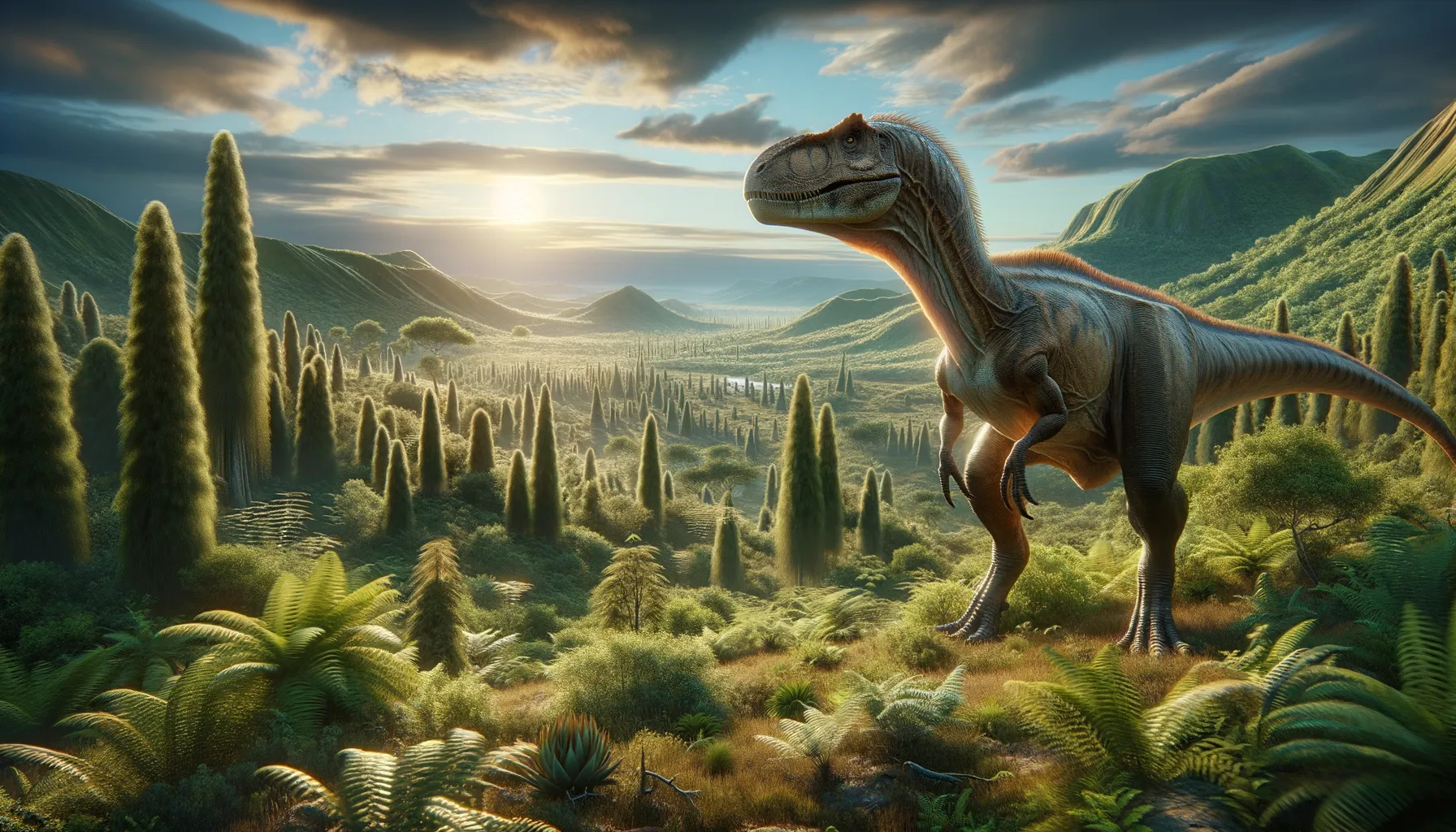
Austrocheirus
Swift hunter of the Cretaceous era!
Period
Cretaceous
Length
Around 5 meters long.
Height
Approximately 2 meters tall.
Weight
Roughly 1,000 kilograms.
Austrocheirus was a mid-sized theropod dinosaur that roamed the lands of modern-day South America during the Late Cretaceous period. With a balanced physique, it demonstrated adaptations perfect for both pursuit and agility. Its remains offer valuable insights into theropod diversity and evolution, shedding light on the rich ecosystems once thriving in prehistoric Argentina. Despite limited fossil evidence, Austrocheirus provides a fascinating glimpse into a unique lineage.
Diet
Austrocheirus likely had a carnivorous diet, primarily preying on smaller animals and perhaps scavenging. Its teeth and jaw structure suggest it was well-adapted to slicing through flesh, akin to many other theropod dinosaurs.
Hunting
Hunting strategies would have involved short bursts of speed to catch prey off guard. Austrocheirus might have relied on stealth and surprise, using the cover of vegetation to approach and seize unsuspecting animals.
Environmental challenges
Austrocheirus lived in a dynamic environment prone to climatic fluctuations that could impact food availability. Competition with other predators was a significant challenge it faced in its ecosystem. Adapting to these factors, it developed strategies that allowed it to thrive amid these pressures. Additionally, surviving potential droughts or floods required resilience and efficient resource utilization.
Speed
Moderate speed, suitable for short bursts.
Lifespan
Estimated to be several decades.
First discovery
Discovered in the Late Cretaceous deposits of Argentina.
Fun Facts
- Austrocheirus means 'Southern Hand' referring to its discovery in the Southern Hemisphere, specifically in Argentina.
- This dinosaur lived during the Late Cretaceous period, around 70 million years ago.
- Despite being a theropod, Austrocheirus had some unique physical characteristics that differ from other theropods.
- It is believed to have been an omnivore, potentially eating both plants and small animals.
- Austrocheirus is known primarily from fossilized hand bones and bits of arm and leg bones.
- The discovery of Austrocheirus helped provide insights into the diversity of theropods in South America.
- The fossils of Austrocheirus were first officially described in 2010, making it a relatively recent discovery in paleontology.
Growth and Development
Austrocheirus experienced rapid growth phases during its juvenile stages to swiftly reach a size where it could better defend itself. This growth was likely influenced by environmental conditions and available resources. Young Austrocheirus individuals would have needed to stay close to protective environments to avoid larger predators. With maturity, they would have become more independent and capable hunters.
Habitat
This dinosaur inhabited the diverse ecosystems of Late Cretaceous South America, ranging from open plains to forested areas. Its environment included a mix of coastal and inland regions that supported varied wildlife. Lush vegetation provided both food for its prey and cover for Austrocheirus itself. Seasonal changes could have impacted its movement patterns, encouraging migrations or territorial shifts.
Interaction with other species
Austrocheirus shared its habitat with other theropods, each competing for resources. Its interactions may have involved both territorial disputes and opportunistic collaborations in hunting. Smaller species might have been wary of its presence, altering their behaviors to avoid becoming prey. Its niche as a moderate-sized predator allowed it to avoid direct competition with the largest carnivores.
Natural lifespan
In natural conditions, its lifespan could reach up to 30 years.
Reproduction
Like many theropods, Austrocheirus likely laid eggs in nests constructed in well-concealed areas. The incubation period would depend on environmental conditions, with both parents possibly involved in guarding the nest. Offspring required significant care initially, benefiting from the protection offered by parental supervision. As hatchlings grew, they gradually took on more independent roles in foraging and self-protection.
Social behaviour
Austrocheirus may have exhibited varying degrees of social behavior, from solitary hunting to occasional pack formation. Social structures would have been fluid, adapting to environmental conditions and prey availability. Communication through vocalizations or visual displays might have coordinated hunting efforts or established dominance within groups. While generally solitary, collaborative relationships with others could enhance survival in competitive settings.
Fossil locations
Fossils of Austrocheirus have been primarily discovered in Argentina, shedding light on its presence in South American ecosystems. These fossils are crucial for understanding the diversification of theropods in this region. Fossil sites provide vital information about the geological conditions of the Late Cretaceous environment. Ongoing excavations continue to unravel the distribution and lifestyle of this intriguing dinosaur.
